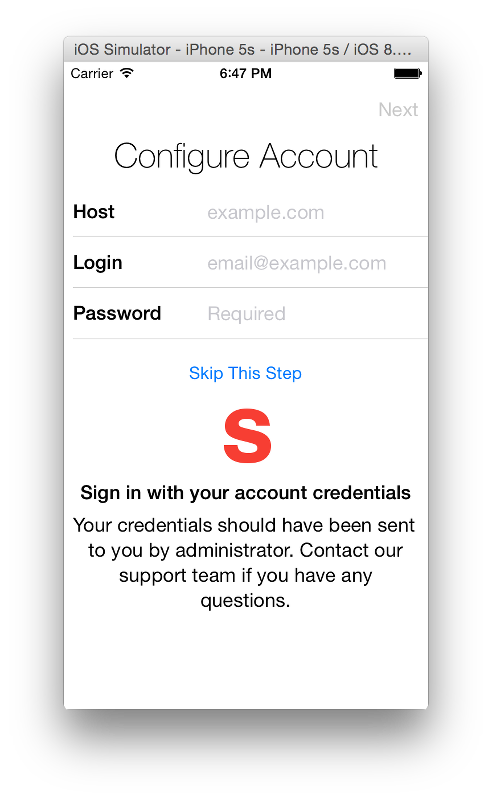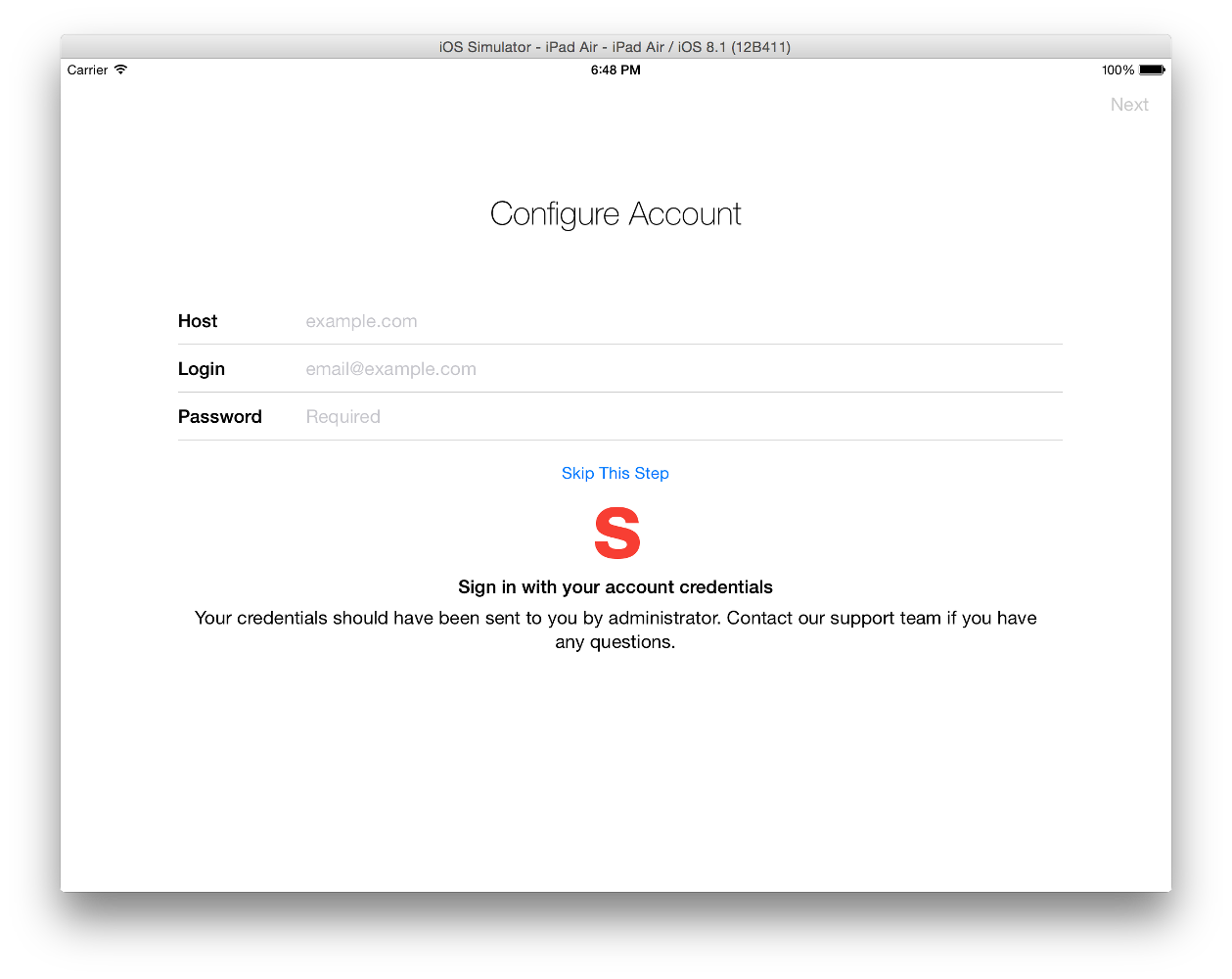A MBSetupController is a subclass of UIViewController controller that acts like a wizard or setup assistant to present a sequence of dialog views that lead the user through a series of steps.
It has been inspired by the iOS Setup.app application which is presented to user during the first-time device setup.
- Support for universal iOS8 applications with portrait and landscape orientations.
- A couple of predefined page view controllers like
MBTableViewPageController,MBProgressPageControllerorMBFinishPageControlleroffers a lot of functionality out-of-the-box to quickly build pages forMBSetupController. - Predefined
MBTableViewPageControlleruse blocks instead of delegate calls to keep the table view's section code in one place, supports autolayout, and autosizing cells (iOS8 feature).
A demo project is included in the repository.
To run it, clone the repo, and run pod install from the Example directory first.
| Minimum iOS Target | Notes |
|---|---|
| iOS 8 | - |
SetupController is available through CocoaPods. To install it, simply add the following line to your Podfile:
pod "SetupController"
##Architecture
###Setup View Controller
MBSetupController
###Page View Controllers
MBBasePageControllerMBTableViewPageControllerMBProgressPageControllerMBFinishPageController
###Items and cells for MBTableViewPageController
MBSetupPageItemMBLabelItemMBTextFieldItem
MBSetupPageCellMBLabelCellMBTextFieldCell
##Quick Start
###Implement setup controller's data source
-
Subclass
MBSetupController@interface MBSampleSetupController : MBSetupController <MBSetupControllerDataSource>
-
Set initial view controller
- (void)viewDidLoad { [super viewDidLoad]; MBAccountController *initialController = [[MBAccountController alloc] init]; [self setViewControllers:@[initialController] animated:NO]; }
-
Implement
MBSetupControllerDataSourceprotocol- (UIViewController<MBPage> *)setupController:(MBSetupController *)setupController viewControllerAfterViewController:(UIViewController<MBPage> *)viewController { if ([viewController isKindOfClass:[MBAccountController class]]) { MBProgressController *progressController = [[MBProgressController alloc] init]; progressController.labelTitle = @"It may take a while to set up your account..."; return progressController; } return nil; }
###Implement Page View Controller
-
Subclass
MBTableViewPageController@interface MBAccountController : MBTableViewPageController
Next steps are all inside
-viewDidLoad. -
Create section
MBSetupPageSection *section = [MBSetupPageSection sectionWithTitle:@"Configure Account"];
-
Configure section's header
section.headerViewBlock = ^UIView*(MBSetupPageSection *section) { return [weakSelf preparedPageHeaderViewWithTitle:section.title]; }; section.headerHeightBlock = ^CGFloat(UITableView *tableView, MBSetupPageSection *section, UIView *view) { CGSize size = [view sizeThatFits:CGSizeMake(tableView.frame.size.width, 0)]; return size.height; }; -
Configure section's footer
section.footerViewBlock = ^UIView*(MBSetupPageSection *section) { MBSectionFooter *footer = [weakSelf preparedFooterViewWithImage:[UIImage imageNamed:@"SampleImage"] title:@"Sign in with your account credentials" subtitle:@"Your credentials should have been sent to you by administrator. Contact our support team if you have any questions."]; [footer.topButton setTitle:@"Skip This Step" forState:UIControlStateNormal]; [footer.topButton addTarget:weakSelf action:@selector(skip) forControlEvents:UIControlEventTouchUpInside]; return footer; }; section.footerHeightBlock = ^CGFloat(UITableView *tableView, MBSetupPageSection *section, UIView *view) { CGSize size = [view sizeThatFits:CGSizeMake(tableView.frame.size.width, 0)]; return size.height; }; -
Create and configure text field item
MBTextFieldItem *hostItem = [[MBTextFieldItem alloc] initWithTitle:@"Host" text:nil placeholder:@"example.com"]; hostItem.keyboardType = UIKeyboardTypeURL; hostItem.autocorrectionType = UITextAutocorrectionTypeNo; hostItem.autocapitalizationType = UITextAutocapitalizationTypeNone; hostItem.textDidChangeBlock = ^(MBTextFieldItem *item) { [weakSelf validate]; }; hostItem.validateBlock = ^BOOL(MBSetupPageItem *item) { return [(MBTextFieldItem *)item text].length > 0; };
-
Add item to section
section.items = @[hostItem];
-
Set
sectionsproperty of theMBTableViewPageControllerself.sections = @[section];
###Present Setup Controller
MBSampleSetupController *setupController = [[MBSampleSetupController alloc] init];
setupController.dataSource = setupController;
[self presentViewController:setupController animated:YES completion:nil];Maksim Bauer, miximka@gmail.com
SetupController is available under the MIT license. See the LICENSE file for more info.





